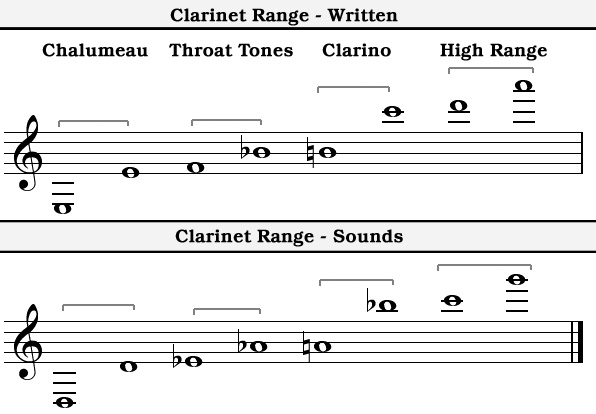clarinet
KLAIR-ih-net
[English]
HISTORY: Clarinets are descendants of the chalumeau, with a cylindrical bore and a single reed. The clarinet developed from the recorder family, and is closely related to the saxophone. The early models c. 1700 were played with reeds placed up against the upper lip of the performer. They were tied to the mouthpiece with twine. Today, ligatures are used to hold the reed to the mouthpiece with the reed against the bottom lip of the performer. Clarinets are relatively recent additions to the orchestra and are standard instruments in the concert band symphonic band military band, wind ensemble, and chamber ensembles. They are also found in popular bands and jazz bands, and are especially prominent in Dixieland jazz.
PHYSICAL DESCRIPTION: The clarinet is constructed of a wooden tube with a cylindrical bore and has a bell that flares slightly more than the bell on an oboe. The mouthpiece which uses a single reed is attached to the uppermost part of the instrument which normally comes in five parts, (in order top to bottom) the mouthpiece, the barrel, the upper joint, the lower joint, and the bell. The clarinet's mouthpiece is sometimes referred to as the beak.
SOUND PROPERTIES: The clarinet sound is produced by the vibrations of the reed attached to the mouthpiece as the air moves across it. The hardness of the reed and the physical characteristics of the mouthpiece all are contributing factors to the quality sound produced. The wood used is typically Grenadilla but Rosewood has also been used. The less expensive models are often made with plastic or composite. These will not crack with changes in humidity and temperature as the wooden models, but they lack the character of sound of the wooden models.
RANGE: Clarinets have the most consistant sound in all registers of their range of any of the woodwind instruments. A highly skilled performer can play the complete dynamic range, starting from the faintest pianissimo to the most forceful fortissimo from the lowest note to the highest note of the clarinet. The most commonly used clarinets are transposing instruments in the keys of B flat, A, C, D, E flat and A flat, as well as the Basset horn in F, alto clarinet in E flat, EE flat contra-alto clarinet, bass clarinet in B flat, BB flat contrabass clarinet, and EE flat contrabass clarinet. The lowest register is the chalumeau producing deep and rich tones is from E below middle C to E above middle C. The throat tones, which are considered to be of a pale quality range from F to B flat. The clarino register, considered to be bright and expressive range from B to C above the treble clef staff. Finally the high range of the clarinet considered to be a piercing shrill range from the D above the treble clef staff to the A above that. Experienced performers can extend the range beyond that A.
Example

Wolfgang Amadeus Mozart: Clarinet concerto in A major, K.622, III
George Enescu: "Romanian Rhapsody", No. 1

Rimsky-Korsakov: Capriccio espagnol, Op. 34, "Fandango asturiano"
Aaron Copland: "Appalachian Spring", Moderato
See Also
[Abbreviation] Cl.[Abbreviation] Kl.
[French] clarinette (f)
[German] Klarinette (f)
[Italian] clarinetto (m)
[Spanish] clarinete (f)
Share
Tweet
Last Updated: 2016-05-21 13:52:27

